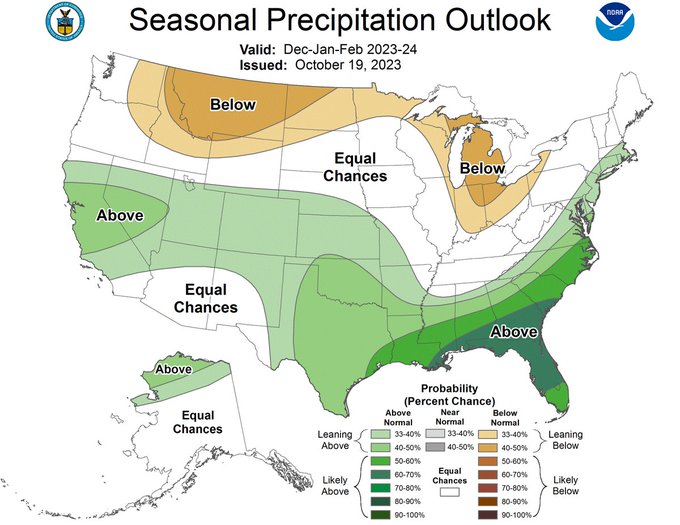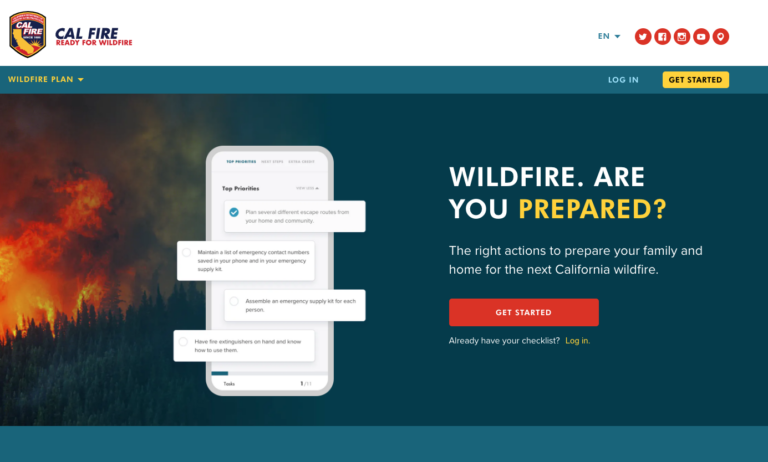Winter’s Coming: Things to Consider to Weather the Storm(s)

As winter approaches, the conscientious among us will remember to perform yearly fall duties, such as replacing our furnace filters. But a changing climate unleashing weather extremes requires us to do more to prepare.
A strong El Niño is on its way, according to the National Weather Service Climate Prediction Center. Warmer waters in the Pacific makes for more powerful, wetter storms hitting the Pacific coast. We’ve experienced atmospheric rivers, flooding, wildfires, and earthquakes and we’ll probably see more. This article will give tips to prepare for each of these hazards.
Overall, you will benefit from a prepared disaster plan. Work out a plan for as wide a range of potential disasters as possible and keep it along with a go bag in a safe, accessible, memorable location. The Sonoma County Department of Emergency Management has a good rundown of items to include in a go bag. A quick internet search will also list numerous commercial pre-made go bags.
Coping with flood, wildfires, and earthquakes has common aspects: any of them can leave you in a situation in which you require backup power. We’ve addressed home backup power systems in a previous blog article. A reliable home backup system, whether a traditional generator or battery storage, can power pumps, refrigeration, internet, heating, etc.
Also, insurance policies can mitigate various disaster situations. California’s insurance commissioner is making it legal again (for the first time in 35 years) for insurers to consider future risks when updating their catastrophe models. The hope is that these companies will continue to provide coverage in the state. California has helpful sites addressing insurance:

Floods
Northern California experiences peak flood seasons from December to February, a trend exacerbated by recurring weather patterns known as El Niño and La Niña. These patterns, occurring every 2 to 7 years and peaking around December, bring wetter conditions to the Bay Area. Additionally, early January sees “king tides,” unusually high tides resulting from the unique alignment of the Earth, Moon, and Sun. 2023 is likely to be a strong El Niño year.
Observe your property during storms and take note of areas prone to water accumulation. Once you have gathered that knowledge, use what you’ve learned to try to make improvements in grading: construct channels for proper flow and elevate low-lying areas. Consider how you might improve other features: mitigate the use of impermeable surfaces and favor natural features such as swales and rain gardens to help drain excess water. Ensure that your house’s gutters and downspouts are kept clean for efficient water runoff.
The following additional tips should help safeguard your home against flooding:
Keep a pump on hand for emergency water removal
Install flood vents in vulnerable areas like crawl spaces and garages
Elevate critical electrical equipment
Keep important documents protected
Wildfires
As with our guidelines for flooding, it’s crucial to keep your property (especially gutters) free from dead leaves and thatch by cleaning them regularly. Also consider the materials that were used for construction, especially the roof, which is a particularly vulnerable area for fire proliferation. Are these materials combustible? Also choose plants for your property that are fire resistant. All plants burn under the right conditions, but some are more fire-safe than others. Cal Fire goes into more detail.
Create and maintain areas of defensible space on your property in 3 zones:
Zone 0, within 5 feet of your house: Try to create a zone that is as noncombustible as possible. This will help to prevent embers drifting through the air from igniting a fire in your home. By 2025, this will be required by law in California.
Zone 1, between 5 and 30 feet: This is the “lean, clean, and green” zone. Keep all trees and vegetation well-trimmed and maintained. Discourage potential fires from climbing trees by removing vegetation where possible.
Zone 2, 30 to 100 feet (or your property line): Reduce any potential fuel for fire. Thin out trees and shrubs to create islands of vegetation. Make sure tree canopies do not touch each other.
For all of these zones, keep vertical distance in mind in addition to the horizontal, and discourage flames from climbing.
These maps show California areas with high wildfire risk.
The California Air Resources Board has tips for coping with wildfire smoke, which can contain PM2.5, or particulate matter with a diameter less than 2.5 microns. These include checking the local air quality index (AQI), staying inside if necessary, and avoiding smoke inhalation. If you need to go outside, wear a NIOSH-certified N95 mask. Inside your home, install an air filter with a MERV 13 or higher rating. CARB-certified air cleaners are also available.
Earthquakes
Earthquake Brace + Bolt is a program of the California Earthquake Authority (CEA) and the CalOES (the Governor’s Office of Emergency Services) that provides up to $3000 for a seismic retrofit. Your house must have been built before 1980, when seismic building codes were introduced, and it must have a wood frame foundation.
The CEA lists Seven Steps to Earthquake Safety:
Secure your space. Be aware of potential hazards and secure potentially dangerous moveable items.
Plan to be safe. Make a plan with your family and have a plan for how you’ll communicate with each other and with the outside world.
Organize disaster supplies. This includes go bags, as we mentioned previously.
Minimize financial hardship. Keep important documents organized and look into acquiring earthquake insurance as previously stated. The Earthquake Brace + Bolt program is part of this step (as well as step 1).
Drop, cover, and hold on while an earthquake is in progress. Protect your head and neck by seeking out a heavy desk or table to hide under. Stay away from bookshelves and windows, and don’t move until all shaking has stopped.
Improve safety. After an earthquake happens, help anyone who’s injured and take steps to prevent further damage.
Reconnect and restore. Take steps to reestablish connection with others and rebuild your community.
Links
Moving Towards the Light: Home Backup Power Systems
Build a Personal Go Bag – Sonoma County Emergency and Preparedness Information
Fall-like weather pattern for CA as El Niño continues to strengthen
Protect Your Home from Flooding | FEMA
Fire Smart Landscaping – Ready for Wildfire
Fire Hazard Severity Zone Maps
How to Prepare for an Earthquake – Tips for Your Preparedness Plan | CEA
Earthquake Precautions & Preparation – 7 Steps to Earthquake Safety | CEA